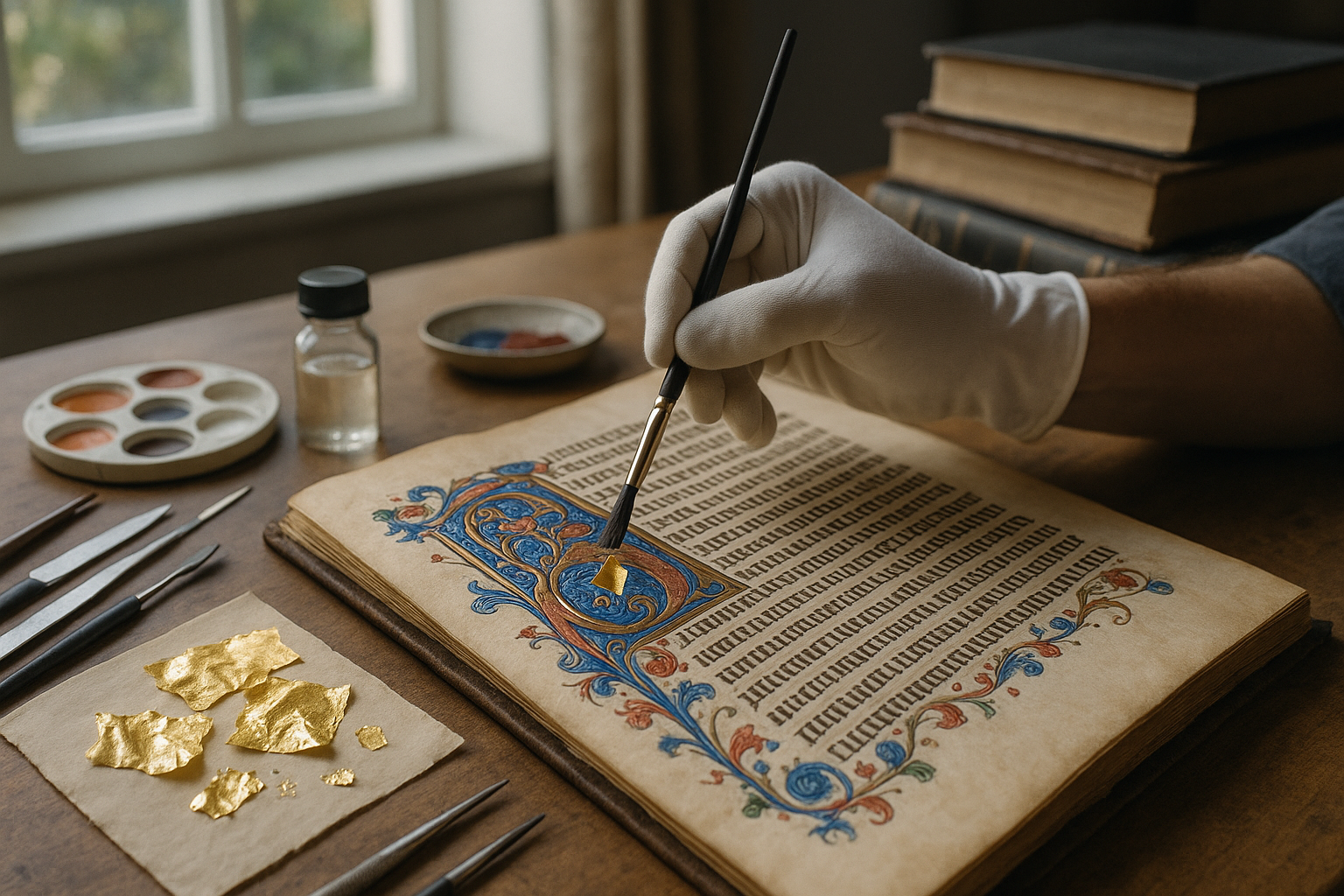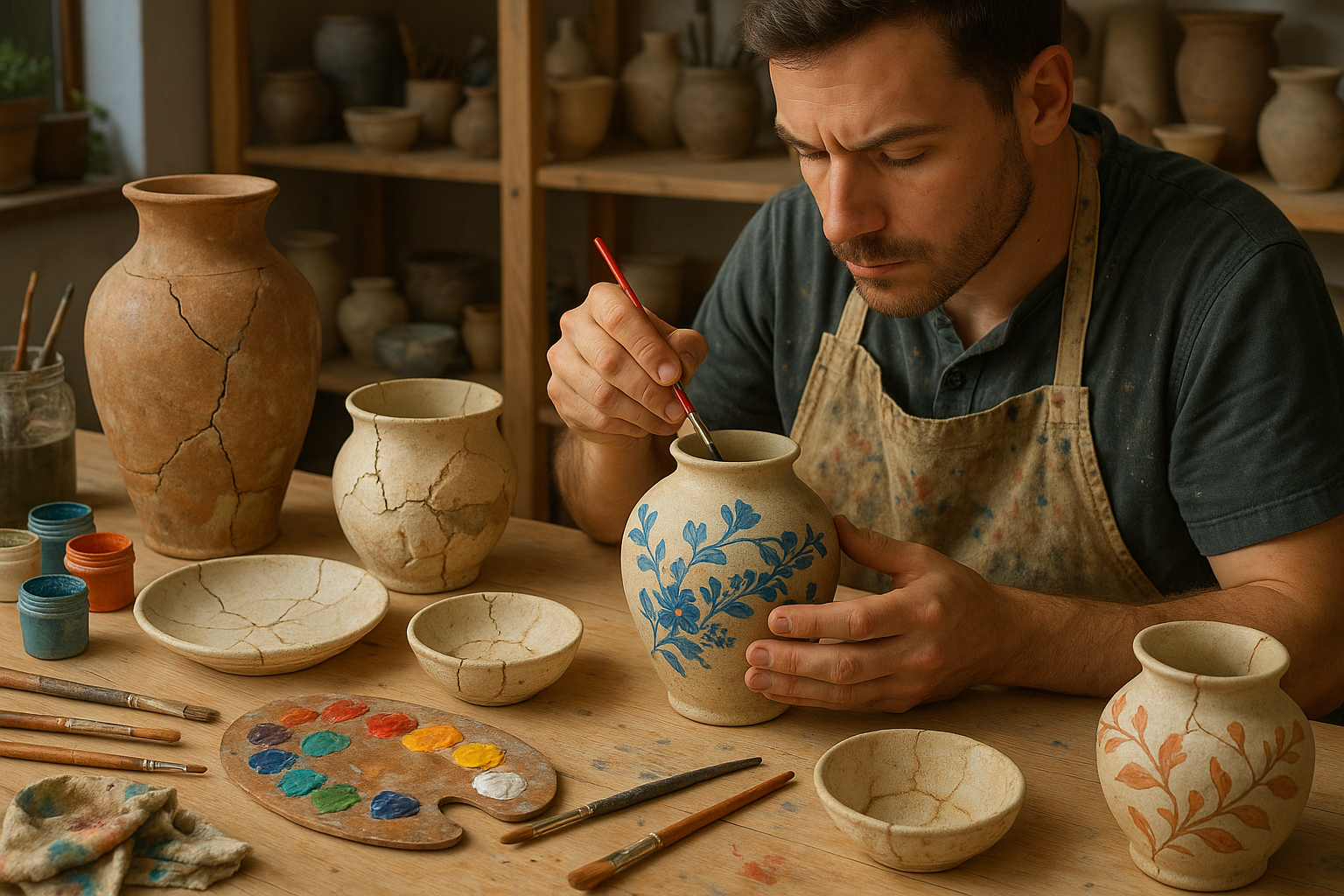In the dimly lit halls of medieval monasteries and the scriptoriums of grand cathedrals, monks and artisans once labored meticulously over manuscripts. These handwritten volumes were more than just books; they were masterpieces, richly adorned with vibrant colors and shimmering gold leaf. Fast forward to today, and the world of illuminated manuscripts continues to captivate historians, art lovers, and restoration experts alike. 🌟
Illuminated manuscripts offer us a vivid glimpse into the past, showcasing the artistry and craftsmanship of bygone eras. However, as with all things ancient, time takes its toll. These precious artifacts face challenges like fading pigments, flaking gold leaf, and the ever-present threat of deterioration. This is where the art and science of gold leaf restoration step in, breathing new life into these treasures and ensuring their beauty endures for future generations.
The process of restoring illuminated manuscripts with gold leaf is a fascinating blend of art, history, and cutting-edge conservation techniques. It requires not only a steady hand but also a deep understanding of historical methods and materials. This intricate work is both an art and a science, demanding precision and care to preserve the manuscript’s original splendor.
In this comprehensive exploration of illuminated manuscript restoration, we will delve into the history and significance of these extraordinary works of art. We will uncover the secrets of the medieval techniques used to create them, from the preparation of vellum and pigments to the application of delicate gold leaf. ✨
Our journey will also introduce you to the modern methods employed by conservators today. Advances in technology and materials have provided new tools and techniques, enabling restorers to address the challenges of preservation with greater accuracy and respect for the original artistry. You will discover how cutting-edge scientific analysis aids in understanding the composition of ancient inks and pigments, helping to guide the restoration process.
Furthermore, we will explore the ethical considerations involved in restoring illuminated manuscripts. Balancing the need to preserve these cultural artifacts while respecting their historical integrity is a delicate task. The decisions made during restoration can impact the manuscript’s historical narrative, making it crucial to approach each project with thoughtfulness and respect.
Alongside these technical aspects, we will also reflect on the cultural and emotional impact of illuminated manuscripts. These works are more than just historical documents; they are windows into the lives, beliefs, and artistic expressions of the past. They carry stories that connect us to our shared human heritage, and through restoration, we continue to honor and celebrate these connections.
By the end of this article, you will have gained a deeper appreciation for the beauty and complexity of illuminated manuscripts. Whether you are an art enthusiast, a history buff, or simply curious about the world of restoration, this journey will illuminate the intricate process that brings these ancient masterpieces back to life. 🌍📜
Join us as we unlock the secrets of the past, transforming these gilded pages into vibrant testaments of human creativity and perseverance. Let us embark on a voyage through time, where art and history intertwine in the luminous glow of restored gold leaf.

Conclusion
As we conclude our exploration of medieval gold masterpieces, it’s clear that these works represent the pinnacle of artistic devotion and technical mastery. Crafted by skilled goldsmiths, each piece — from illuminated reliquaries to ornate chalices — embodied faith, power, and prestige, blending sacred symbolism with unmatched craftsmanship.
The true revival of medieval gold art lies in preserving its spirit of precision and reverence. 🌿💡 Through meticulous restoration, historical study, and the reawakening of ancient techniques, modern artisans are breathing new life into these treasures while honoring their original intent. Ultimately, reviving medieval gold masterpieces is more than an act of preservation — it is a celebration of the enduring human desire to fuse beauty, spirituality, and skill into creations that transcend time.




